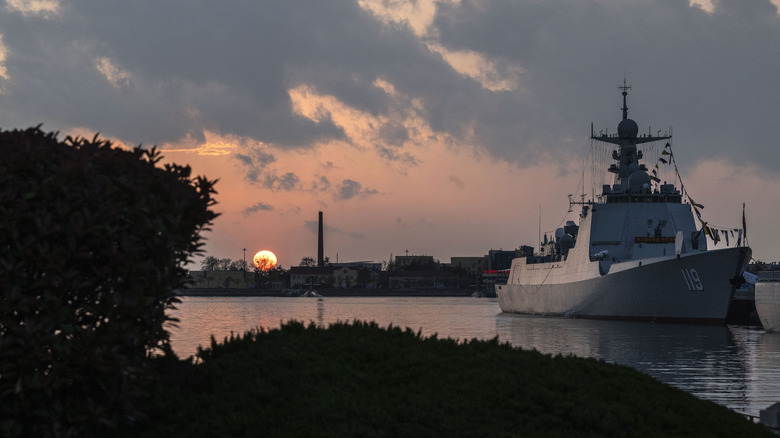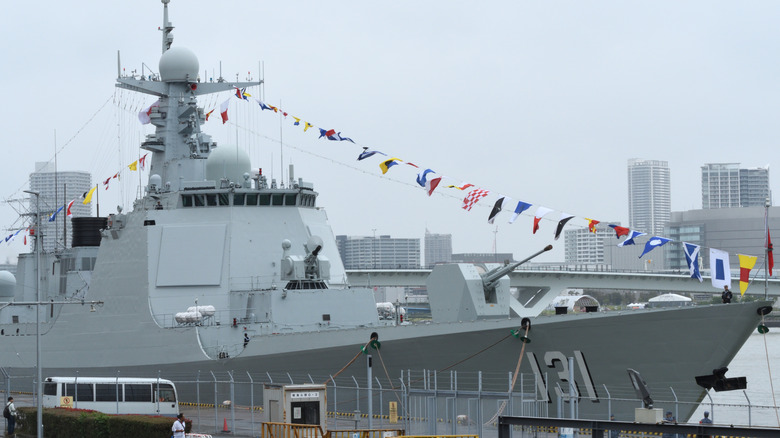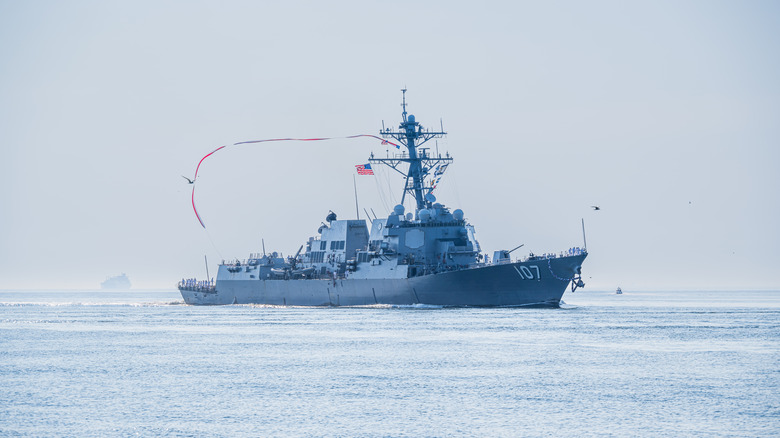China Vs US Destroyers: How The Naval Warships Compare
The destroyer fighting ship (not to be confused with the cruiser) is the workhorse of the modern U.S. Navy. The 75 destroyers in active service — which are mostly Arleigh Burke-class ships — are able to provide support for attack missions in the air, on the surface of the water, and against submarines. Each ship carries advanced radar and vertical launch systems (VLS) that can fire missiles on a variety of missions far from U.S. shores.
One of the most powerful Navy destroyers in the world, the first Arleigh Burke entered service in the early 1990s. In the decades that followed, the class has been updated multiple times with new sensors and electronic warfare systems. These American destroyers routinely operate worldwide, and their crews train extensively in joint operations, giving the U.S. an experiential advantage over China's newer fleet.
Still, challenges remain. Modernization has slowed, with only 11 new destroyers launched in the last decade, compared to China's 23. The U.S. has invested heavily in a few high-value ships, but production bottlenecks and a strained shipbuilding industry limit expansion. The Navy itself has admitted it may be over-reliant on large cruisers and destroyers, when smaller ships and unmanned systems could fill in the gaps. While U.S. destroyers remain formidable, they face growing numerical and industrial pressure from China.
China's destroyer fleet: modern and expanding fast
The People's Liberation Army Navy (PLAN) has rapidly expanded its destroyer fleet from just 20 ships in 2003 to 42 in 2023. Many have modern designs, with capabilities that compete with U.S. destroyers. China's Type 052D and Type 055 destroyers, for example, carry advanced phased-array radars, long-range missiles, and updated command systems, narrowing the technological gap that once gave the U.S. Navy clear superiority.
The PLAN's advantage mainly lies in shipbuilding speed and scale. About 70% of China's warships were launched after 2010, meaning the fleet is younger, on average, than the U.S. Navy's. Chinese shipyards produce warships at a pace the United States has not been able to match. If current trends continue, China may close the destroyer gap entirely, or even surpass the U.S., within the next decade.
In combat simulations, this numerical momentum matters, as even with heavy losses, China could still bring more ships to the fight than the United States. Destroyers play a central role in battle operations, providing missile firepower and fleet protection. Combined with smaller vessels that operate on the surface, China's destroyers are the anchor to a naval strategy relying on numbers and its proximity to home waters. What China lacks, however, is operational experience. Its destroyers are new but untested in combat, and their crews lack the decades of expeditionary deployments that define the U.S. Navy. While the ships themselves are impressive, how well they perform under fire remains an open question.
The U.S. Navy still holds the lead in destroyer missile firing capabilities
On paper, the U.S. Navy still maintains an edge in destroyer capability. American ships integrate seamlessly with carrier strike groups, field powerful Aegis radar systems, and deploy more vertical launch cells per ship than most Chinese equivalents. The U.S. also operates globally, while the PLAN remains focused on regional waters. These factors give the U.S. Navy a qualitative advantage in individual ship-to-ship comparisons.
But the strategic picture is shifting. China is closing the gap not just in destroyer numbers but in missile firepower. In 2004, U.S. ships had more than 200 times the number of vertical launchers as China. Today, the margin is less than three-to-one, and some analysts predict China could surpass the U.S. in total VLS capacity by 2027. That shift means Chinese destroyers, supported by land-based missiles and regional logistics, could overwhelm U.S. formations in a prolonged conflict.
The U.S. industrial base struggles to keep up with demand, while China's vast shipyards build warships at unprecedented speed. Smaller surface combatants and unmanned systems could help the U.S. adapt, but those programs are still developing. For now, the U.S. destroyer fleet holds the qualitative lead, but China's combination of newer ships, rapid expansion, and growing missile capacity makes the race competitive. China's navy is already pretty big, and it's only getting bigger.


